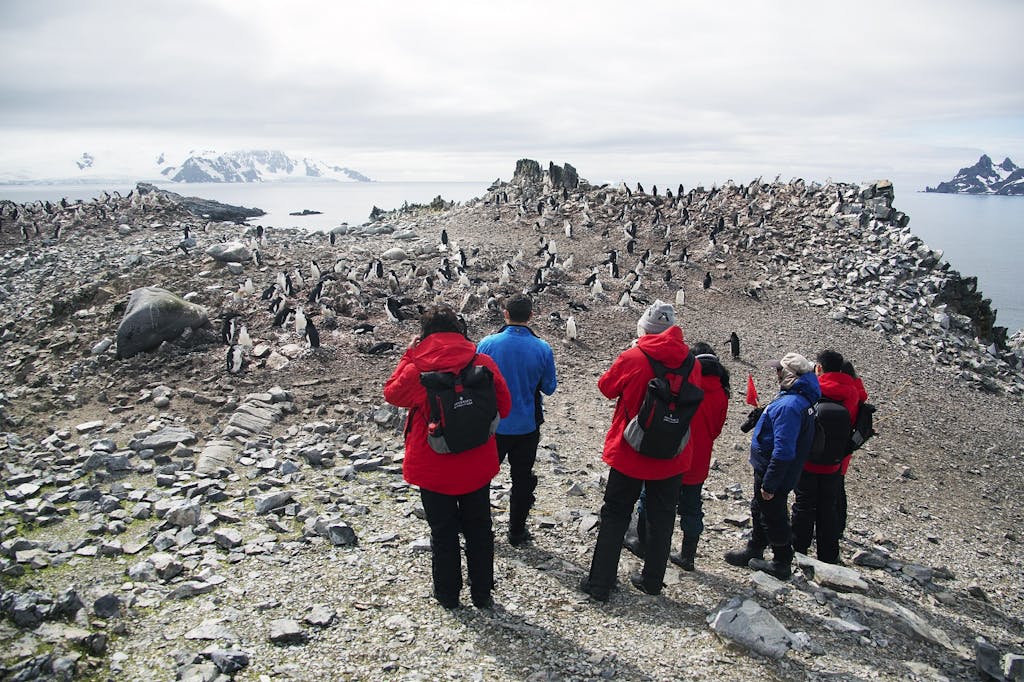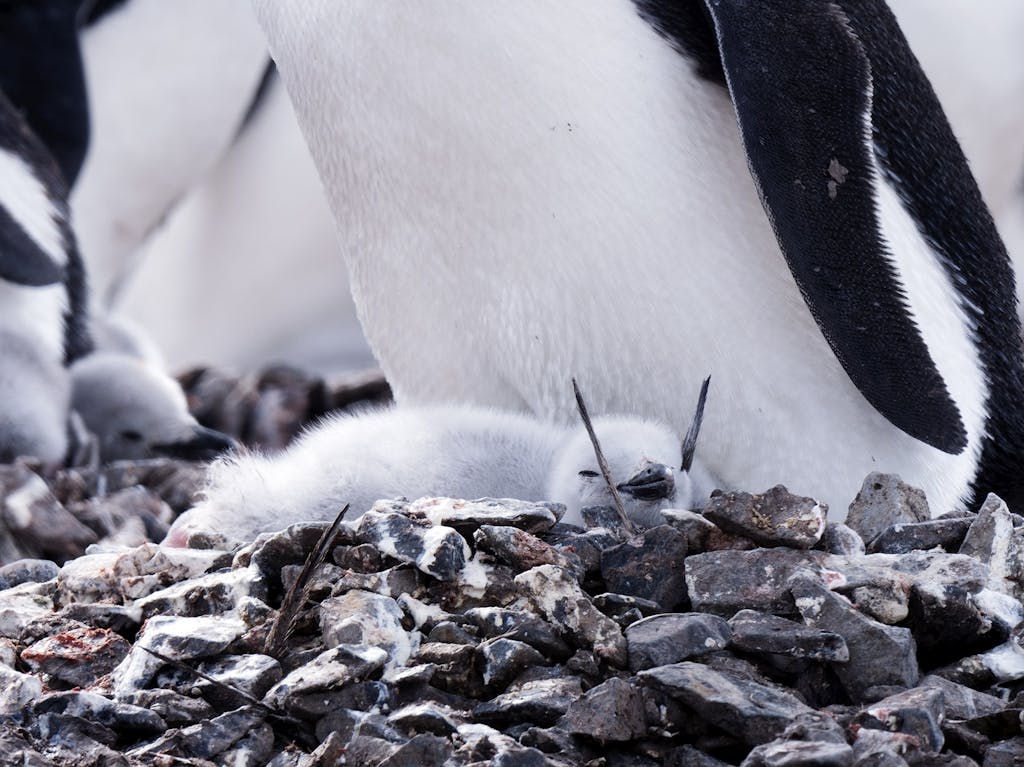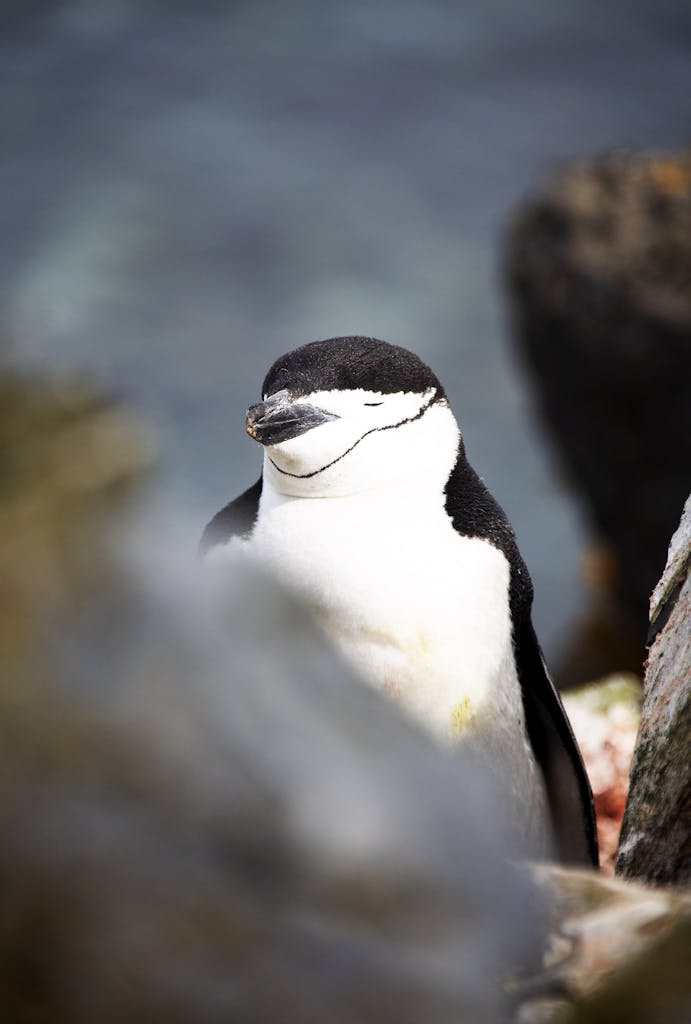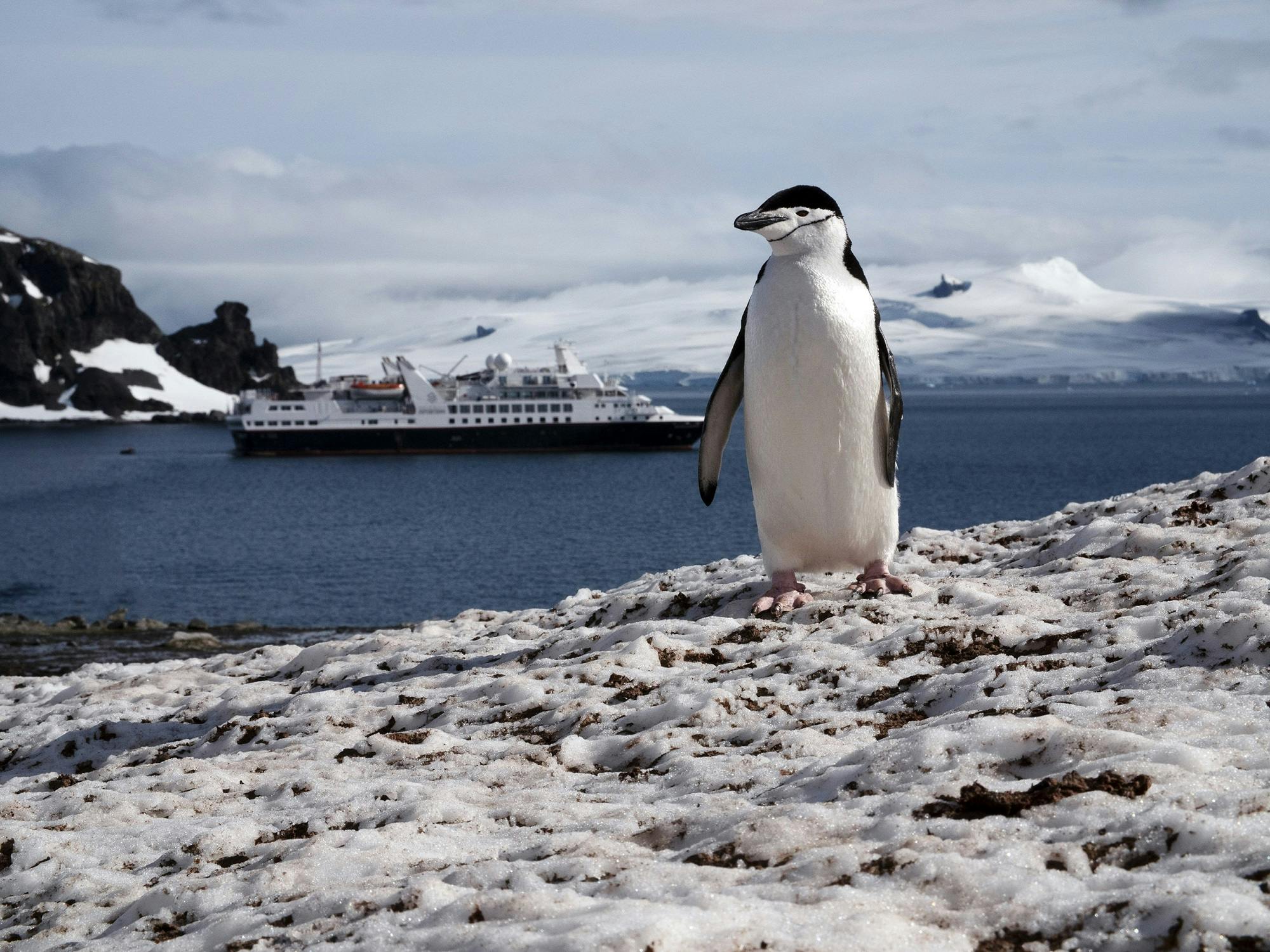Behind the Lens: An Epic Journey with a Chinstrap Penguin
Expedition Filmmaker and member of Silversea’s talented Onboard Photographer team Ross Vernon McDonald chuckles over the peculiar mannerisms of penguins. “They are clumsy and awkward, seemingly unintelligent, but in an endearing kind of way that makes them amazingly photogenic,” he recalls. “Their poised stature gives them a characteristic waddle, while their flailing flippers seem to protrude outwards as their only means of stability.”
A Subject on the Move: Half Moon Island, an idyllic natural setting in Antarctica’s South Shetland Islands, staged a unique moment for McDonald, which he highlights as a defining moment in his career. It involved a Chinstrap Penguin, a hazardous stretch of rocks from the Southern Ocean to a penguin colony atop a hill, and a handheld camera.
“I’d never been to Antarctica, nor seen penguins in the wild. I was a first-timer,” he recollects, casting his mind back to a 13-day voyage aboard Silversea’s Silver Explorer in December 2019. “We took the Zodiacs from the ship, anticipating a wet landing on this secluded coastline in the South Shetlands Islands, just off the Antarctic Peninsula. Curious brush-tailed penguins were already swimming around the craft on our way into the bay—I spotted at least two species, Chinstraps and Gentoos.”
“Landing on the beach made the adventure seem even more wild and memorable. As I stepped off the Zodiac onto a stone-covered beach, I felt like I was at ease with the resident penguin populations. I didn’t feel alone. It felt almost welcoming that the wildlife doesn’t mind you being there and, in many ways, it felt like the animals didn’t even notice me. I could hear an overwhelming squawking, and the raw scent of penguin guano filled the air.”

The Antarctic Touch: Photographing wildlife in Antarctica is no mean feat, but the conditions aligned when McDonald first touched ground on Half Moon Island, offering a golden moment to film the ensuing encounter: “I recall that the weather was spectacular on that day and the sunshine was reflecting from the water, which is crystal clear in that part of the world. Because of the light, the white of the snow seemed to dazzle and glitter when I peered through my lens. Just spectacular. The beach was filled with penguins who were resting in between hunts, so I knew I’d have ample opportunity to get great footage.”
“Here we were in this remote land that’s unlike anything I’d ever seen. I really got the feeling that the Antarctic Peninsula was geographically distinct from the rest of the world, in many ways. I remember feeling more isolated from modernity than I ever had before. It’s very surreal, I think—the environment itself. There you are at the edge of a continent that’s barely touched by humans, separated from civilization by the Southern Ocean. It feels like you’re on another planet, almost.”
A Moment above All Others: “One moment from my time on Half Moon Island is especially memorable: a Chinstrap Penguin emerged from feeding at sea and peered in the direction from which loud squawking seemed to come. Over the next 30 minutes or so, we trekked together up to the penguin colony on the hill, navigating the craggy terrain, embarking upon an adventure. This spirited little creature was the perfect subject: comfortable, animated, a joy to film—even making me wonder if we were working together, collaborating to capture the most intimate moments of his arduous journey in a dynamic way.”
“Here we were in this remote land that’s unlike anything I’d ever seen. I really got the feeling that the Antarctic Peninsula was geographically distinct from the rest of the world, in many ways. I remember feeling more isolated from the modern world than I ever had before.”
Ross Vernon McDonald, Expedition Filmmaker
“It was a long hike, which involved hopping over jagged rocks, while I was quietly filming alongside him—not an easy journey for a Chinstrap Penguin! We’d stop every few minutes while he’d catch his breath and I’d reset my camera while admiring the majestic beauty of the surroundings. Then, when he was ready, we’d set off again, until we eventually came over the rocky brow of the hill, where he was greeted back to the colony with a cheer of loud squawking into the cold Antarctic air. He finally delivered mouthfuls of krill, the fruits of his labor, to his ever-hungry chicks. It was a touching moment for me.”

On Capturing the Shot: “I really enjoyed filming penguins because they approached me so naturally, and seemed to allow me to film them in a way that you can’t really do with other wildlife. You can just watch them, free of any concern. You don’t have to feel like you’re hiding from the animals or in stealth mode, positioned low to the ground. You can just sit and enjoy their company, in the moment, or move around in time with them.”
“I’d usually have to use my zoom lens to record animals, but penguins are so curious that I could film with different lenses in a more personal way. If you do so respectfully and at a distance, you can move slowly around the penguins, which allows the viewer to feel like they are walking among the penguins, rather than spying on them from a distance. I used a DJI Ronin gimbal to add movement to my shots, which allows for smoother, more dynamic footage, while eliminating handheld camera shakes. My whole experience of filming with the penguin colonies was incredible, and felt like a true milestone in my work.”
“For a Chinstrap Penguin, this epic journey was just a normal part of an average day, but for me it was exceptional, and his hard work and courage is something I’ll remember forever.”

